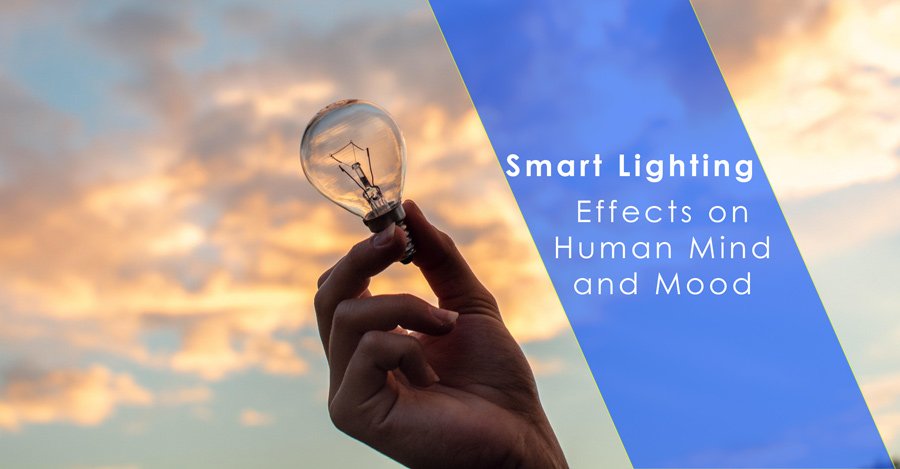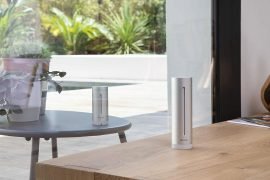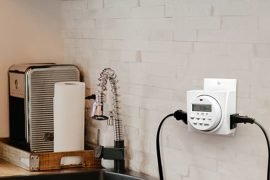Smart devices are becoming more and more widespread in the world, among which Smart lighting, one of the most common used automatic systems to start with. But does it have effects on our health and mood? At work?
Lighting is very important at home as well as at work.
Lighting is Source of Work Performance and Well-being at Workplace
The market of work nowadays is more competitive than ever before. Employment, health and good life are the main targets of a good living and well being.
In “Lighting, Well-being and Performance at Work”, a review about existing research documents that are good evidence of an association between lighting and work performance, mediated by employee’s well-being, Professor Jo Silvester, director of The Centre for Performance at Work, argues that lighting is indeed an important element that helps create a good and healthy working environments” promoting both “well-being and productivity”
In addition, the review focuses on evidence associating “lighting conditions, shift-work and biological health conditions”. Therefore, the review recommends that companies should provide convenient atmosphere for employees at workplace and that by providing adequate lighting to enhance their well-being and their performance.
The Hawthorne Studies: Hawthorne Effect
The Hawthorne effect is a type of response in which individuals modify an aspect of their behavior in response to their awareness of being observed. The original research at the Hawthorne Works in Cicero, Illinois, on lighting changes and work structure changes such as working hours and break times was originally interpreted by Elton Mayo and others to mean that paying attention to overall worker needs would improve productivity. Later interpretations such as that done by Landsberger suggested that the novelty of being research subjects and the increased attention given to employees atmosphere could lead to temporary increases in workers’ productivity.
The most striking findings of these studies, called the Hawthorne effect, showed that performance was still increasing, regardless of how variables were manipulated by researchers. Lights turned on or off led to increased productivity. The same thing happened with temperature and humidity. The conclusion was that the workers responded to the attention they received, which is very important considering the effect of smart lighting on mental health today.
Performance looked at by researchers in the workplace believed that optimizing environmental factors always led to improved performance and productivity.
Although these studies did not reveal a direct relationship between lighting and performance, they showed that attention to employee needs could ultimately improve productivity.
The human relations movement created as a result of these studies remains influential today. Their approach to workplace design places a strong emphasis on the fact that the global environment is the key to performance and well-being.
The research focused on how workplace performance could be improved through the well-being of workers. As a worker, you can stay in better shape and be happier at work, while your employer will gain in terms of performance: a real win-win relation.
Mood and Lighting
When people spend most of their time indoors, they are obviously less exposed to natural light. Therefore, the internal body clock -Your circadian rhythm tells you when to wake and sleep and is influenced by the sun. Since you spend most of your time under artificial lighting, when this is too dim during the day, it can lead to troubles and gaps in energy.
On the other hand, brighter days and darker nights can help you to sleep better, and avoid tiredness and other factors of stress besides health problems, collectively known as Social jetlag, that could be the reason why you’re so tired all the time. It can play a part in the happening of a variety of conditions of depression and obesity through to addictive behaviors and health issues like diabetes etc.
In the worst case, limited access to natural light can be a factor of seasonal affective disorder, a form of depression. The treatment often involves exposure to a bright artificial light up to 20 times higher than most indoor lighting. Some exposure to the natural light during the day can do better. And this can help the brain to release endorphins, mood-related hormones.
Poor Lighting Affects Mood
Poor lighting is most of the time neglected in the workplace as we talk about mental health and well-being, and the focus is clearly on creating happier and healthier workplaces. But poor lighting is associated with a series of negative effects on physical and mental health, such as eye fatigue, headaches, body fatigue, but also stress and anxiety in high-pressure work environments.
While we spend a large part of the day under artificial lighting, it appears that the lack of natural light has dangerous effects on the body and mind and can lead to problems such as Seasonal Affective Disorder.
“As we navigate the darkest (and shortest days) of the year, 40% of office workers are struggling to work in poor lighting every day. This has a negative effect on their productivity and well-being”. According to a new research report, looking at the impact of lighting in the workplace, ” a recent research report by the UK Company Staples, where an online survey of “7,000 office workers was conducted in October 2018. The research sample consisted of a sample of desk-based office workers from ten European countries including: United Kingdom (2,000, with 302 in London), Germany (1,000), France (500), Netherlands (500), Sweden (500), Norway (500), Spain (500), Italy (500), Portugal (500) and Finland (500). 80% of office workers, said that having good lighting in their workspace is important to them, and two-in-five (40%) are having to deal with uncomfortable lighting every day. A third (32%) said better lighting would make them happier at work. However, when access to natural sunlight is so limited in the winter, many are feeling stressed and suffering from seasonal affective disorder (SAD), and often spend long hours at their desks which is sometimes their only access to light during the day. The results have also shown that 25% of the surveyed are frustrated at having to deal with poor lighting in their workplaces” reported Dr. Dr. Pragya Agarwal in How Does Lighting Affects Mental Health In The Work place.
Moving From Fluorescent Lighting to LEDs
Many buildings and offices still use those old fluorescent lights because they’re cheaper and last longer, but people should want to rethink this strategy.
These types of lighting emit too much blue-green light just like the light that comes from computers and cell phones. These lights can provoke headaches and eye strain.
Even if modern fluorescent lighting has gone farther to lessen this, the problem still exists.
In the meantime investing in smart lighting could be as an unnecessary expense to some employers, it remains still an investment with enormous potential benefits. By making your workers happier and healthier, productivity can be felt and in parallel, operational costs diminish. Eventually, new smart lighting in every workplace can be cheaper.
The evolution of LED lighting caused the running costs become less and less costing. LEDs reduced energy and its maintenance’ cost. With LEDs employers can save as much as 50% annually. Programmable smart lighting is also another way to help cut costs further, especially when it is combined with motion sensors to get rid of the illumination of unoccupied spaces.
LED Lights Uses
No UV emissions, no toxic substances if you use LED lights that emit light in a targeted direction. This fact removes the need for diffusers and deflectors and increases efficiency. You’ll get rid of that disturbing flickering associated with fluorescent strip lighting.
Though, still far from being a perfect solution, LED lighting remains to a certain extent a better alternative.
This is because most lighting solutions on the market don’t take into account the eye’s non-visual photoreceptors, responsible for basic biological functions. These have been discovered in 2001 by American scientist GC Brainard.
This relatively recent discovery is an explanation as to why much lighting does not feature this element into the thesis. But why is it so important?
What happens is that the receptor responds most fully to sky blue wavelengths of light. The receptor sends signals to your internal body clock and many lighting providers don’t allow this in the design of LEDs.
Therefore, a much more personalized form of lighting will become a necessary issue in the advance and future of technology of lighting.
Biodynamic Lighting Systems in Trend: Human Centric Lighting
LED technology and digital control of light have beaten the way for a new dimension in lighting design, that is to say, Human Centric Lighting. This trend theme in the lighting industry focuses on “healthy” light and the effect of light on performance and well-being. Considered as innovative lighting solutions, they are therefore increasingly taking into account people’s biological lighting needs.
What is Human Centric Lighting?
In his article entitled “Human Centric Lighting: Biodynamic Lighting Systems in Trend”, Stefan Poglitsch states that: “Human Centric Lighting (HCL) is based on the discovery of a third receptor in the eye that controls the human biological clock. These light-sense cells of the human eye are not there to see, but control the production of melatonin. Like small organic antennas, they register the light and control its biological effect on the body. The so-called circadian rhythm, which is oriented towards daylight and regulates the waking and sleeping phases of the human being, is of huge importance.
Human Centric Lighting is therefore about “circadian lighting”, a
lighting concept that imitates the
natural course of daylight and is modeled on the biological
rhythm of human beings. In order to achieve a biological or melanopical
lighting effect, brightness, dynamics, gradient and light color must be optimally matched”.
This sensor in the eye is responsible of the regulation of the production of melatonin and cortisone; it registers light, and controls the biological effect on the body.
Human Centered Lighting is a lighting concept that tries to be on a par with the natural course of daylight based on the circadian rhythms of the human body. This is done by matching up brightness, light color, dynamics and gradient.
By using this type of lighting, workplaces can provide a better element to natural light leading to a healthier and productive atmosphere and contributes to the well-being of employees. In addition, the settings can be adjusted to alter both color temperature and luminance.
Workplace Lighting Can Be Improved
To improve lighting conditions, here are some simple ways Tips for any workplace.
If employers are thinking about the well-being of their workers as well as their own bottom line, these basic pointers are worth taking into consideration:
- Install LEDs: employers will not only reduce energy and maintenance costs but also help their employees feel happier. The benefit is an increased productivity as well as a healthier workforce.
- Incorporate Natural Lighting: it is very important to have much more natural light into workplaces. Indeed, installing floor-to-ceiling windows or any other solutions might be so expensive. When you consider the energy costs of artificial lighting and the improvement in productivity you could make out of it, this investment might be the smartest one you’ve ever made in your life.
- Add Colorful Lamps: the fact that colored lamps are placed on desks gives workers a degree of control and ability to customize and adjust lighting in their space just the way they like it.
- Use Task Lighting: Overhead lighting is not solely the most efficient solution without a task lighting to help. These lamps are adjusted and can direct light exactly where it’s needed without using too much energy. That’s why they are great for productivity and great for work environment.
- Biodynamic Lighting: If employers feel their companies can afford this new lighting technology, it is well worth looking into biodynamic lighting for a completely customizable approach to smart lighting in the workplace with many advantages for them and for their employees too.
Finally:
The way poor lighting reduces mood, energy levels, and productivity has been revealed.
Smart lighting in workplaces, particularly when this adopts the personalized touch of biodynamic lighting, has proved to have many advantages. Not only will employees feel more valued by their employers, they will also feel more vigorous and energetic. This will lead to getting better job done at work in less time while feeling significantly better and praised. As a result, both the employer and the employees are winners with smart lighting in the workplace







